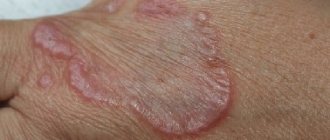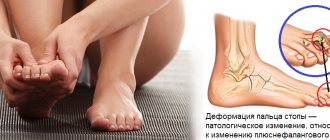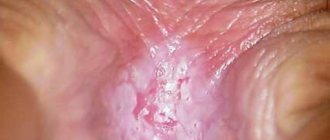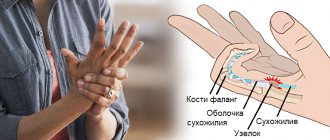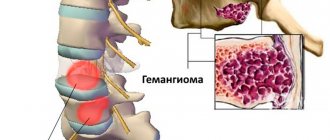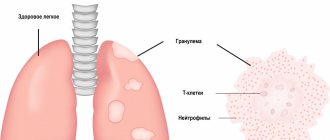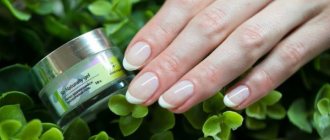Dermatoses most often appear on exposed areas of the skin as they are most susceptible to external factors.[1] This also applies to the skin of your hands. Symptoms such as itching, redness, peeling, various spots and other elements of the rash primarily affect the forearms, hands and fingers.
One of the mechanisms for the development of dermatitis on the fingers or hands is direct contact with a substance to which the body's immune system is not able to adequately respond. Skin allergy is a classic delayed hypersensitivity reaction in response to a single or systematic interaction with a pathogen.
Dermatological skin diseases are widespread, especially among working age adults.[2] For some patients, hand allergies can be a short-term problem: very often the symptoms go away on their own. Other patients struggle for a very long time with the disease and complications that can be caused by a secondary infection. In this case, hand allergies manifest themselves even more aggressively, the rashes become more widespread and unbearably itchy.
Causes
The main causes of allergic reactions on the hands:
- Hereditary predisposition. Characteristic of neurodermatitis, eczema, and other allergic dermatoses. If both parents have allergic diseases, the risk of developing neurodermatitis in a child is 70%2.
- Diseases of the gastrointestinal tract. Biliary dyskinesia, chronic gastritis, and disruption of the pancreas can contribute to the development of allergies and their transition to a chronic form.
- Impaired skin barrier function.
- Regulation disorders of the central nervous system.
- Bad habits (smoking, alcohol abuse).
- Unfavorable environmental conditions.
Allergy is a multifactorial disease that requires complex treatment. In some cases, it is not possible to determine the exact cause of the disease.
Is the rash on the palms contagious?
If the rash is caused by infectious diseases, fungi or parasites, then more often it is a contagious course of the disease.
These include:
- rubella;
- measles;
- meningitis;
- scabies;
- scarlet fever;
- chicken pox and so on.
Diseases are transmitted by airborne droplets, contact or household contact. With such diseases, the patient must be isolated from others until complete recovery. With helminthic infestations, it is also possible to infect other people in contact with a sick person if basic hygiene rules are not followed, for example, washing hands after using the toilet.
If the rash occurs due to an allergic reaction, then there is no threat of infection. Allergies are the individual characteristics of everyone’s body.
The cause of the rash should be determined as quickly as possible to ensure that it is not spread to others. Timely treatment will avoid serious consequences of the disease.
Answers to frequently asked questions about skin rashes:
- Which doctor should you contact for a skin rash?
- Is the skin rash contagious?
- What diet is necessary for skin rashes?
- What diagnosis is needed for a skin rash?
- Why is a skin rash dangerous?
- Why is it necessary to get tested for a skin rash?
- What diseases does a skin rash indicate?
- What examination is necessary for a skin rash?
- Which skin rash is dangerous?
- How to distinguish an allergic rash from an infectious one
- How to get rid of skin rashes?
- How to get rid of itching skin rash?
- What organs are affected by a skin rash?
- How to prepare for an appointment with a dermatologist?
- How to get checked for skin diseases?
- What diseases does a dermatologist treat?
- What tests should be taken by a dermatologist?
- What diagnostics can a dermatologist perform in the clinic?
- Where to go with a skin disease?
Atopic dermatitis
Neurodermatitis or atopic dermatitis is a chronic condition that first appears in early childhood. Neurodermatitis on the hands is accompanied by severe itching, which can interfere with sleep at night. Rashes can occur on the scalp, face, neck, upper and lower extremities. Visually, during the acute period of the disease, redness, swelling of the skin, itchy spots of various shapes and sizes, exudation with subsequent formation of crusts are noted. When transitioning to the chronic stage, the skin becomes dry, flaky, and areas of thickening of the skin appear with an intensification of the skin pattern.
There are three age periods of atopic dermatitis:
- infant (up to 2 years);
- children (from 2 to 13 years);
- teenage and adult (13 years and older).
The disease lasts a long time, and other allergic diseases (seasonal rhinitis, bronchial asthma) may occur. In adolescents, rashes may be accompanied by symptoms of vegetative-vascular dystonia (weakness, mood swings, headaches, discomfort in the heart area).
Types of rash
The location of the rash can be a direct indication of the type of disease. If it's your hands, most likely it concerns allergic diseases. Another important factor is the size of the rash, because the spots can be large or, conversely, small.
The types of rash on the palms can be varied:
- Spots – contribute to the change of skin pigment and are located at the skin level. May vary in colors.
- Pustule – there is pus inside the elements.
- Erosion - there is filling inside and the elements differ in color.
- Bubbles – there is a watery content inside and there are different sizes.
- Blisters.
- Dry crusts.
If the resulting rash begins to itch, we are talking about infectious diseases. For example, a person gets chickenpox. In humans, such a disease is quite complex and can have serious consequences. Allergic reactions require relief from the allergen.
At times, the rash can be caused by a state of severe stress, as mentioned above, or as a result of prolonged overwork. As a result, human immunity becomes weaker. Therefore, doctors advise spending more time outside and breathing fresh air there. When the first signs appear, you should contact a dermatologist. The skin is represented by a certain indicator that notifies that serious health problems may begin.
Common symptoms and manipulations in dermatology:
- Skin rashes
- Calling a dermatologist to your home
- Itching in the urethra
- Itchy skin
- Skin rash
- Prevention of casual sex
- Skin neoplasms
- Pyoderma
- Pityriasis rosea
- Streptoderma
- Scabies
- Peeling skin
- Fungal infections
- Skin infection
- Pus on the skin
- Blisters on the skin
- Papillomas on the foreskin
- Sexually transmitted diseases
- Skin structure
Hives
An allergic rash on the hands of an adult can be a symptom of urticaria. Urticaria is characterized by redness, swelling of the skin, and the appearance of itchy blisters. Local edema develops due to increased vascular permeability upon contact with allergens. The rash is accompanied by intense itching and can appear on any area of the skin. Symptoms of acute urticaria completely disappear within a day (usually a few hours after stopping contact with the allergen).
Forms of the disease:
- Immunological urticaria (the development is based on a hypersensitivity reaction).
- Physical urticaria (reaction to high or low temperatures, sun, pressure, other physical factors).
- Drug-induced urticaria.
- Idiopathic urticaria (when the cause of the rash cannot be determined)3.
A dangerous complication of the disease is angioedema. It is accompanied by swelling of the deep layers of the dermis, subcutaneous tissue, submucosal layer of the upper respiratory tract, gastrointestinal tract, and urogenital tract3. When the first signs of Quincke's edema appear, you should immediately consult a doctor.
What tests need to be taken for a rash on the palms
To accurately understand the causes of skin rashes on the palms, the doctor will order tests.
The list of standard examinations includes:
- analysis of the contents of pustules, skin scrapings;
- general blood analysis;
- blood chemistry;
- blood for allergens;
- blood for helminth detection;
- feces on worm eggs.
If sexually transmitted infections are suspected, a blood test will be ordered for syphilis, gonorrhea, and so on.
You can get tested without leaving your home. Our clinic offers this service at home and transportation of biomaterial to the laboratory. Test results can be obtained on the same day of treatment.
Contact dermatitis
A common allergic skin disease that occurs due to skin contact with allergens. It can occur in acute or chronic form. During an exacerbation, it manifests itself as redness of the skin and the formation of itchy blisters. In the chronic version, the skin becomes dry and the skin pattern intensifies2.
Allergens that can cause rashes include:
- metals (nickel, cobalt, chromium, aluminum);
- rubber and rubber products (balloons, latex gloves, condoms);
- cosmetics and perfumes (containing flavors, stabilizers, preservatives);
- local medications (anaesthetics, glucocorticosteroids, antibiotic ointments);
- Hair Dye;
- synthetic glue, adhesives;
- plants (primrose, poison ivy and others).
The development of dermatosis can occur through allergic or non-allergic pathways (irritant contact dermatitis). It is important to identify the substance causing the rash in time and avoid contact with it.
Which doctor treats rash on palms
A rash on the palms is usually treated by a dermatologist. A dermatologist is a specialized specialist whose responsibility is to determine the causes and treat diseases of the skin and mucous membranes.
Our clinic employs a highly qualified dermatologist with extensive experience. It is certified to accept adults and children.
If necessary, the dermatologist will refer the patient for a consultation with an immunologist, allergist, or infectious disease specialist.
Eczema
Eczema is a chronic inflammatory skin disease characterized by the appearance of a polymorphic rash and severe itching. True eczema is manifested by redness and limited swelling of the skin, on which small blisters appear filled with transparent contents2. After opening the bubbles, erosions remain, which eventually become covered with crusts. In the chronic form of the disease, the skin thickens. The rashes are symmetrical, most often occurring on the upper, lower extremities and torso.
What diseases cause a rash on the palms
A rash on the palms is just one sign of many diseases. This condition occurs in infectious and non-infectious pathologies. In addition to the rash, high fever, abdominal pain, loss of appetite, nausea, vomiting, and deterioration of health may occur. You must immediately seek medical help, since wasting time can threaten the health and sometimes the life of the patient.
Among the possible diseases that occur with rashes on the palms are:
- meningitis;
- piggy;
- rubella;
- syphilis;
- measles;
- scarlet fever;
- dyshidrosis;
- advanced stage of fungal skin infection;
- chicken pox and much more.
It is impossible to establish an accurate diagnosis based on just one sign. The doctor will prescribe a series of tests to determine the type of pathogen. Based on the data obtained, a treatment regimen will be drawn up.
One of the most dangerous diseases accompanied by a rash is meningitis. This is a viral disease, but there is also a bacterial form. She's more insidious. One of the signs of this type of meningitis is a rash localized on the legs, arms, and sides of the body. This rash is bright red, sometimes with a purple tint, and does not rise above the skin. When pressed, the color of the rash does not fade. In addition to the rash, the pathology causes severe headache, muscle spasms, vomiting, and high fever. Emergency assistance required.
Dyshidrosis mainly affects people who are prone to allergies or have a hereditary predisposition. The disease occurs due to decreased immunity, central nervous system disorders, and disruptions in the endocrine system. Rashes on the palms appear periodically, since the disease has a chronic form. The rash is small, subcutaneous, and can merge with each other. There is liquid inside, and after the bubbles burst, erosions and crusts remain. The rash is accompanied by itching.
A dangerous condition that causes a rash on the palms can be anaphylactic shock or allergic purpura.
Cetrin for hand allergies
Cetrin is a second generation antihistamine whose active ingredient is cetirizine hydrochloride. It blocks H1-histamine receptors, helping to reduce swelling, redness, and itching of the skin. Cetrin is used for the following diseases: hay fever, urticaria, neurodermatitis, allergic rhinitis and conjunctivitis.
Advantages of the product:
- The effect of use and relief of symptoms begins 20 minutes after taking the tablet.
- Convenient method of use (one tablet is enough to maintain the effect for 24 hours4).
- Suitable for long-term treatment, non-addictive.
- Practically does not cause drowsiness5.
- Eliminates symptoms regardless of the factor that caused the allergy.
Cetrin can be taken regardless of meals; the therapeutic effect lasts for three days after the end of the course of treatment4.
Where to go with a rash on the palms
A rash on the palms can be a sign of many diseases. You cannot diagnose yourself; you must seek qualified medical help at a medical institution.
Advantages of seeking help from our clinic:
- We work any day, without holidays and weekends;
- The appointment is conducted by an experienced dermatologist;
- The clinic’s staff also includes allergists, immunologists and infectious disease specialists, whose consultation may be required;
- The clinic’s own laboratory allows you to quickly and easily take all the necessary tests and get results on the day of treatment;
- There is a service to call a doctor at home, which is much more comfortable for the patient.
Our clinic provides assistance to both adults and children. The well-equipped clinic, professional medical workers, polite and friendly attitude contribute to a speedy recovery.
Literature:
- Werfel T., Breuer K., Rueff F et. Al. Usefulness of specific immunotherapy in patients with atopic dermatitis and allergic sensitization to house dust mites: a multi-centre, randomized, dose-response study. Allergy, 2006. - V. 61. - Issue 2. - P. 202-205.
- Clinical allergology. Guide for practicing doctors / ed. R.M. Khaitova. - M., 2002. - 624 p.
- Russian national conciliation document. Urticaria and angioedema. Recommendations for practicing physicians. — Ed. I.S. Gushchina, N.I. Ilyina. - M.: Farmarus Print Media, 2007. - 128 p.
- Instructions for medical use of the drug Cetrin®.
- Kareva E.N. Choosing an antihistamine: a pharmacologist’s view // RMJ. 2021. No. 12. pp. 811–816.
Treatment of rash on palms
There is no general treatment regimen for rashes on the palms. It all depends on the diagnosis and the characteristics of the patient’s body. Treatment must be prescribed by a doctor. Before coming to the doctor, you should not use products that change the appearance and color of the rash - iodine, brilliant green, fucorcin.
Treatment is prescribed only after all tests have been completed. It includes:
- In simple cases, certain ointments and creams that are used to treat the affected areas of the body are sufficient. Sometimes tablet medications and injections are added to the treatment regimen. These can be hormonal, antiviral, antibacterial, antifungal, antihistamine drugs.
- Prescription of physical procedures. This includes ultraviolet treatment and other types of exposure.
- Children are prescribed baths with medicinal herbs that relieve itching and inflammation.
- For bacterial skin lesions, antibiotics are added to the treatment regimen in a certain dose.
- Vascular diseases require special treatment, using specific drugs.
- Sulfur and other ointments help with scabies. But the choice of remedy is determined by the doctor.
Folk remedies can complement treatment. Their feasibility is agreed with the doctor.


